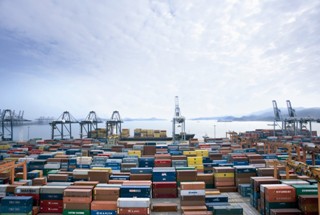 Kuehne + Nagel (K+N) registered higher earnings in the first quarter of 2013 on the back of improved internal efficiency and productivity as well as positive results from its airfreight and contract logistics businesses.
Kuehne + Nagel (K+N) registered higher earnings in the first quarter of 2013 on the back of improved internal efficiency and productivity as well as positive results from its airfreight and contract logistics businesses.
In a media statement released today, the Swiss forwarder said that despite a soft market, its overall turnover increased by 5.4 percent to CHF5.09 billion (US$5.47 billion) in Q1 of this year compared to the previous year’s period. Gross profit improved by 2.3 percent to CHF1.53 billion, while the operational result (earnings before interest, taxes, depreciation, and amortization or EBITDA) of CHF219 million was above the previous year’s CHF153 million.
Net earnings amounted to CHF134 million from last year’s CHF68 million, which took account of an EU antitrust fine of CHF65 million.
Kuehne + Nagel said airfreight increased in volume by about 5 percent for the period, even as the market declined by 2 percent. Good demand from the Asian export business and a moderate increase in outbound traffic from Europe propelled the growth. With efficient cost management and productivity improvements, EBITDA improved by 9.3 percent over the previous year.
In contract logistics, restructuring measures resulted in an increase in net turnover by 2.5 percent and an EBITDA increase of 27.3 percent.
Sea freight volume grew by only 2.3 percent, as a decline in box traffic on the Europe-Asia lane countered the 5 percent and 10 percent increases in most other routes.
In road and rail logistics, EBITDA fell from CHF14 million in the previous year to CHF2 million in the first quarter of 2013, the sector taking a hit from the economic difficulties in Europe and adverse weather conditions throughout the first three months of this year.
Karl Gernandt, chairman of Kuehne + Nagel, said that to improve its financial record, the company will focus on further profit and cost management as well as tapping into growth opportunities outside of Western Europe, particularly in North America, the Middle East, Eastern Europe, and South Asia.
Photo courtesy of K+N




